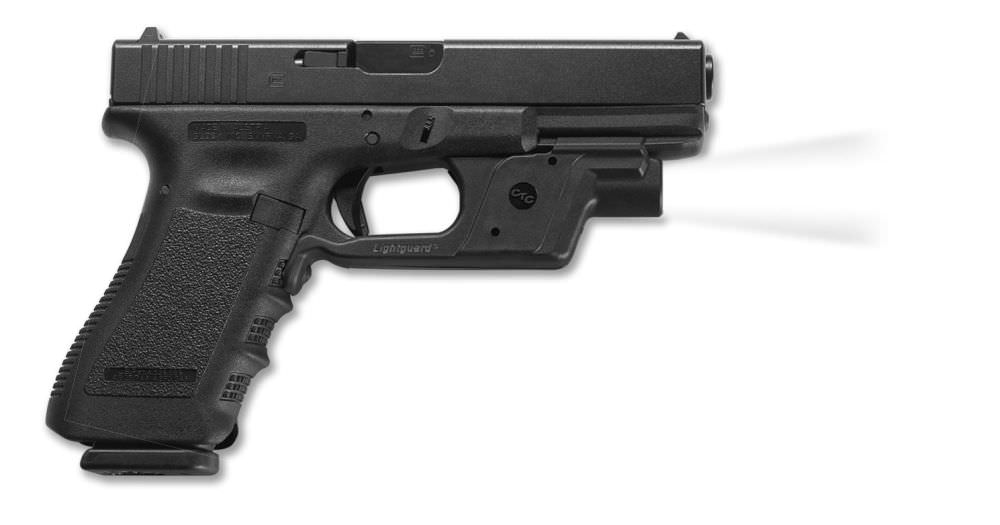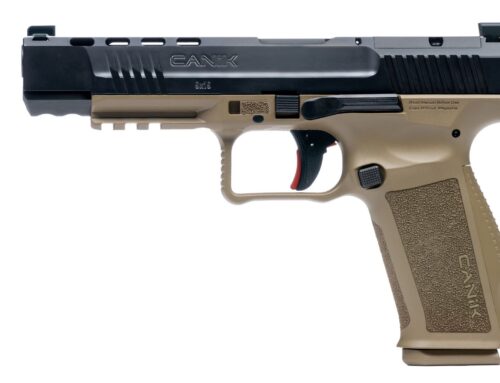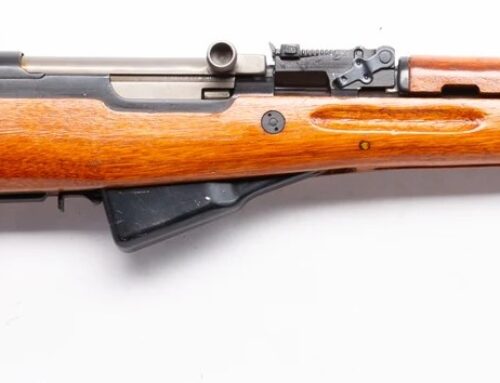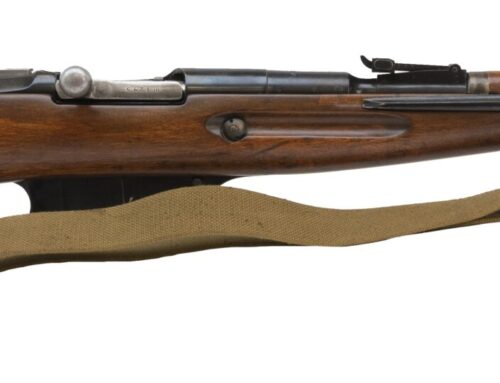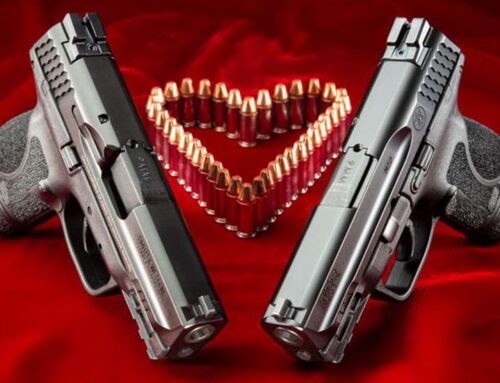There are a lot of reasons to consider owning a firearm for home defense. Having any gun is better than none should the unthinkable happen, however there are many details to consider if the intention is for use within your home. With so many options available it’s helpful to break down some pro’s and con’s of each category. The end goal is to help you to determine which option might be best for you.
First, let’s distill the various options into more basic categories. Pistol caliber firearms, rifle caliber firearms, and shotguns.
Pistol calibers are the gold standard for personal protection. They’re designed to be mild recoiling, are intended for close range use, and can be used in smaller and lighter firearms. Pistol calibers are designed to work best in short barrels.
Rifle calibers tend to be much more powerful and often shoot smaller bullets at way higher speeds than pistols. Since rifles are meant for longer ranges they benefit from longer barrels both for accuracy and allowing these bullets the time they need to build up speed.
Shotguns are a sort of jack of all trades. While great for hunting their use as a defensive tool can be a bit more questionable. The best ammo option for shotguns is buckshot with birdshot being ineffective and slugs being too powerful. In all instances shotguns work best with longer barrels.
Here’s where things get a little tricky. With pistol calibers you can find what are called Pistol Caliber Carbines, or PCC’s. Some are sold as rifles, some are sold as large frame pistols.
Similarly, many rifles such as the AR-15 are configured in a way which classifies them as pistols. Shotguns can be found in much smaller formats as well.
The first practical consideration is an exercise you can do right at home. If you’re in the kitchen and pull a butter knife from the drawer, how are you holding it as you walk around? Now compare this to if you’re carrying a broom. Most likely you’ll carry the broom vertically and close to your body, right? You don’t want to be knocking pictures off of walls or smacking the TV. Because you’re indoors a longer firearm is going to be more difficult to maneuver whereas a handgun gains mobility.
There’s a flipside here. We humans do enjoy articulating while we communicate. Having something in your hand typically means that the object is along for the ride when you’re motioning or gesturing about. When you want to turn on a light, open a door or signal to your family, you typically use your dominant hand. Now consider that this same hand is now holding a loaded firearm. When dealing with a handgun it becomes especially important to remember that you have something way more dangerous than a butter knife in your palm. The handgun’s mobility perk requires more careful handling.
Compare this to a rifle. You’re more likely going to have both hands on it and due to the cramped spaces you’re probably going to be pointing it either upward or downward. It becomes easier to keep track of where a rifle or shotgun is being aimed. When you go for that light switch or door you’re going to want to keep the gun held close to yourself with your off hand, keeping any fingers well away from the trigger with the barrel and stock alike away from hitting your TV.
With this in mind, let’s run the gamut of options.
Handguns, including revolvers and semi-automatic pistols, are:
Good because they’re small, lightweight, easy to operate and maneuver with, and are best suited for closer use.
Bad because it’s easier to lose track of where they’re pointed, have somewhat more limited capacities, can be more difficult to aim, and have limited space for attaching accessories such as flashlights or laser sights.
Handguns excel in mobility. Spare magazines can easily fit into a pocket if necessary. They can be used up close or drawn out at arm’s length and can be used in one or both hands. They’re also easier to tuck away somewhere safe and thus are much quicker to bring into action. The downside is that if you aren’t paying attention you could easily get yourself into trouble.
Pistol caliber carbines are:
Good because they can hold 30 rounds per magazine or more, are much more stable than handguns, have more space to attach accessories to and are easier to keep on target.
Bad beacuse you’re trading the mobility of a handgun for that of a rifle. The extended magazines and accessories only make a big gun bigger. You’re also pushing a bullet meant for a shorter barrel down a much longer one which can cause the rounds to over-penetrate a target and hit whatever’s behind it.
Pistol caliber carbines may not be the best option but there is a nice middle ground here in a “large frame” pistol. These types of firearms allow you to keep a pistol caliber round in a short barrel while also providing extra stability, higher capacity magazines and more space for accessories without being the length of a full rifle. These types of pistols do have additional legal considerations however, such as not being allowed to attach stocks or vertical foregrips to them.
With rifles I’m going to focus strictly on modern sporting rifles rather than ones intended for hunting. Rifles are:
Good because they are capable of holding 20 to 30 rounds or more in a magazine, tend to have mild recoil, allow for extra stability, and have space for mounting accessories.
Bad because their size makes them more difficult to maneuver indoors, optimized for ranges much further than a hallway, tremendously loud indoors, and fire very powerful rounds.
While rifles will work in a pinch for home defense they become much easier to get yourself into trouble with should your shot miss its intended target. Rifle calibers get to be considerably powerful compared to pistol calibers, meaning you will also have to deal with much more noise and potentially muzzle flash.
Rifle caliber pistols are:
Good because they keep the magazine capacities of their full sized counterparts while gaining mobility.
Bad because they recoil harder than rifles, generate much much more noise and muzzle flash, and are not as effective as rifles.
Rifle bullets are designed to work best out of longer barrels. When you shorten the barrel you end up with a lot of unburnt powder which produces blinding flashes of light along with deafening noise. The shorter the barrel, the more they suffer from these issues. These types of firearms tend to sacrifice more than they gain. One saving grace is the .300 BLK round which is specifically designed for use in shorter barrels as well as suppressors.
Shotguns are:
Good because their size aids in stability, less likely for shot to over-penetrate, slight increase in hit probability.
Bad because they’re large, have very limited capacities, can be difficult to operate or reload under stress, are quite loud and can have heavy recoil.
The myth that “you don’t have to aim with a shotgun” is only somewhat true. Any shot will spread out from a shotgun barrel but when you’re dealing with such close ranges this shot will not have much of a chance to open up. On the other hand you probably don’t want the shot opening up too far because you might miss your target completely. You’re responsible for every one of those pellets which leave your gun.
Firearms with short barrels chambered for shotgun ammo are:
Good because of their gained mobility, particularly if using something like a .410 revolver such as a Taurus Judge.
Bad because the noise, muzzle flash and recoil become greatly amplified while ammo capacity and shot performance are dramatically reduced.
It is my personal belief that this category of firearm is the worst option for defensive use. A .410 out of either a pistol or a rifle is not effective for such a role and something like a short barreled twelve gauge is one of the harshest recoiling firearms you can own. They become more difficult to aim, have higher chances of “rogue” pellets going off target, and typically hold very few rounds. In addition the shortened barrels mean that the shot isn’t getting pushed nearly as fast, thus hindering their performance.
Some final considerations, all types of firearms have different intended roles. Sporting, hunting, defensive, target, match, etcetera. Some types such as hunting rifles will have features which are of much less importance for indoor use, like weather resistant stainless barrels with “match grade accuracy.” You won’t be making shots at over a hundred yards inside of your home so don’t get too caught up in these details.
There’s also the target and match firearms which tend to have smaller sights for precision shooting and lightened triggers. While they will still work, these are not great defensive options. The lighter triggers in particular are both easier to accidentally bump and often require use of a manual safety which becomes another operation you will need to memorize. Again, don’t get caught up with these details. Keep focused on the defensive aspect and don’t be too put off by a heavier feeling trigger or non-match grade barrel.
With the market being what it is there may be situations where you have to go with what’s available and having anything is better than nothing. Still, it’s always good to know what you might be getting into or to better understand what you already have access to. Regardless of which type of firearm you use for home defense, the single most important decision you can make is to train with it! Remember that in a defensive situation every second counts. Don’t be too hard on yourself if you aren’t getting straight bullseyes (though perhaps consider getting into competitive shooting sports if you do.)
Whatever you choose to arm yourself with, always practice and learn. Don’t just practice shooting, also practice reloading and clearing jams. Figure out what works and what doesn’t so you can attempt to address these issues. When your safety is on the line, confidence is key.



